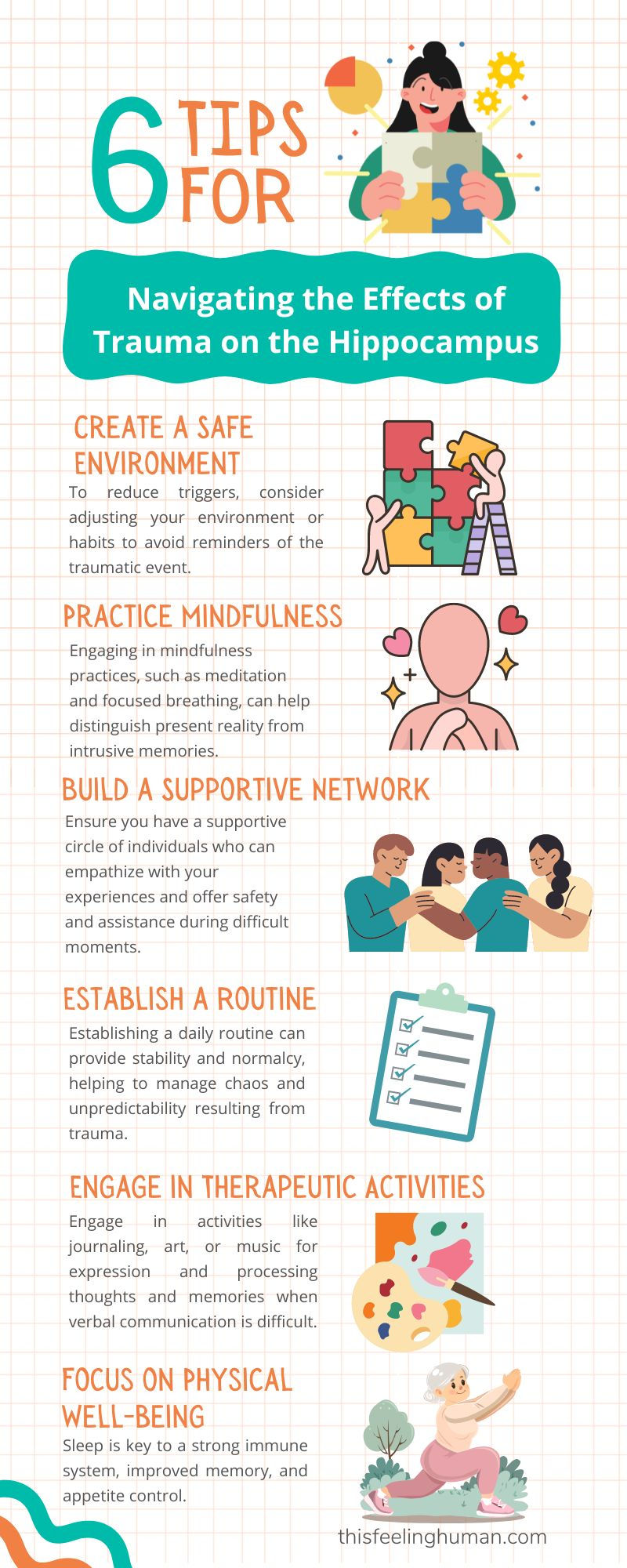Understanding the Impact of Trauma on the Hippocampus
- TFH

- May 3, 2024
- 4 min read
Updated: Aug 8, 2024
The hippocampus (limbic brain), a critical part of our brain involved in memory processing, plays a central role in how we navigate our lives, enabling us to store and retrieve memories and understand and interpret the world around us. However, when trauma enters the picture, the normally orderly process of memory storage and retrieval can become disrupted. Trauma can fragment and scatter memories, removing them from their context and making them feel current and raw, rather than safely stored away in the past.
How Trauma Affects the Hippocampus
Tucked away in the brain's folds, the hippocampus intricately shapes our memory and emotional landscape. When trauma casts its shadow, this region undergoes significant changes, disrupting our memory processing and emotional balance. Exploring this dynamic reveals not only the challenges but also the potential paths to healing that can restore our inner resilience.
To support this journey, we collaborated with The School of Emotions to promote their Emoli Cards. Additionally, you can purchase our Emotions-Based Coaching bundle, which includes a life coaching session and a year's subscription to Calm3D's immersive emotional regulation tool. Check out our bundled promotion here.
Memory Fragmentation: Rather than storing memories as a whole, the hippocampus under the influence of trauma stores memories in pieces without a coherent timeline.
Intrusive Memories: These fragmented memories can vividly intrude into the present, triggered by sensory cues related to the traumatic event.
Difficulty Distinguishing Past from Present: The hippocampus struggles to differentiate between past and present, leading to a sensation of reliving trauma.
Trigger Sensitivity: Environmental cues can become potent triggers, activating traumatic memories and overwhelming the individual.
Tips for Navigating the Effects of Trauma on the Hippocampus

1. Create a Safe Environment: Minimize exposure to potential triggers. This could mean making changes in your living space or routine to avoid stimuli that closely mimic aspects of the traumatic event.
2. Practice Mindfulness: Mindfulness exercises can help ground you in the present and make it easier to distinguish between current reality and intrusive memories. Techniques such as focused breathing, meditation, or mindfulness-based stress reduction can be beneficial.
3. Build a Supportive Network: Surround yourself with people who understand or are willing to learn about your experiences and can offer support and safety when you're feeling overwhelmed.
4. Establish a Routine: A predictable daily routine can provide a sense of stability and normalcy, helping to counteract feelings of chaos and unpredictability stemming from trauma.
5. Engage in Therapeutic Activities: Activities like journaling, art, or music can provide an outlet for expression and processing, helping to organize thoughts and memories that might be too challenging to articulate verbally.
6. Focus on Physical Well-being: Regular physical activity, a balanced diet, and sufficient sleep can significantly impact mental health, improving resilience and overall mood.
A Journey to Healing
Think of your journey through healing as reorganizing a scattered library. Initially, the task may seem insurmountable, with books—the fragments of your memories—strewed in disarray. However, with patience, support, and the right strategies, each book can be carefully restored to its rightful place on the shelf. The narrative of your life can become coherent and manageable once more, transforming the library into a place of refuge, knowledge, and peace.
Understanding the intricate ways in which trauma affects the hippocampus equips us with the insight necessary to embark on a path of healing, recognizing the importance of patience, support, and specialized strategies in restoring order to the mind's library.
Cultivating Safety and Love Versus Navigating Fear and Abandonment
Think of your brain like a garden. When it gets lots of sun (representing love and safety), it grows in ways that make you brave and curious, ready to check out new things and take on challenges. This is because it's in a happy, healthy environment that encourages it to stretch and grow.
But if the garden of your brain is often stuck in storms (meaning it feels scared and alone), it changes too. It shifts from wanting to explore to focusing on staying safe. It's like a plant curling up to protect itself from the cold. In this case, the brain gets good at dealing with worry and feeling left out because that's what it has to do to get by.
Even if your brain has gotten used to fear or feeling alone, the good news is that it can learn new tricks at any age. This ability is called neuroplasticity. It means you can teach your brain to feel safe and loved and to seek out connections instead of pulling away.

How do you do that? By slowly adding experiences of kindness, trust, and care into your life. It's like watering and caring for your brain's garden, allowing new ways of thinking and feeling to grow. This takes time, just like it takes time for seeds to sprout and flowers to bloom.
If you're more used to being cautious or feeling lonely, it's important to remember that it's not permanent. Small steps towards being kinder to yourself, and finding safe, caring people to connect with, can plant the seeds of change. Eventually, your brain can shift from survival mode to one where it feels safe to explore and grow.
So, no matter the starting point, everyone's brain can transform, to heal and become a place full of light, love, and new adventures. Just like a garden, with the right care, it can blossom beautifully.
Conclusion
By adding good things like kindness, patience, and friendly connections to our lives, we essentially feed our brain garden. Over time, this helps change old, worried ways of thinking into fresh, happy thoughts. Just like a garden doesn't turn lush overnight, changing our brains takes some time and steady effort. But the result? A mind that feels more secure and ready to enjoy life's adventures.
So, let's keep planting those positive seeds, watering them with good experiences, and feeling the sunshine of supportive relationships. That way, we empower our brains to not just survive, but truly thrive in a world filled with love and safety. The journey is worth it because, in the end, we'll see a vibrant garden—our minds—full of colors and life, reflecting the beauty and resilience within us all.

Comentarios